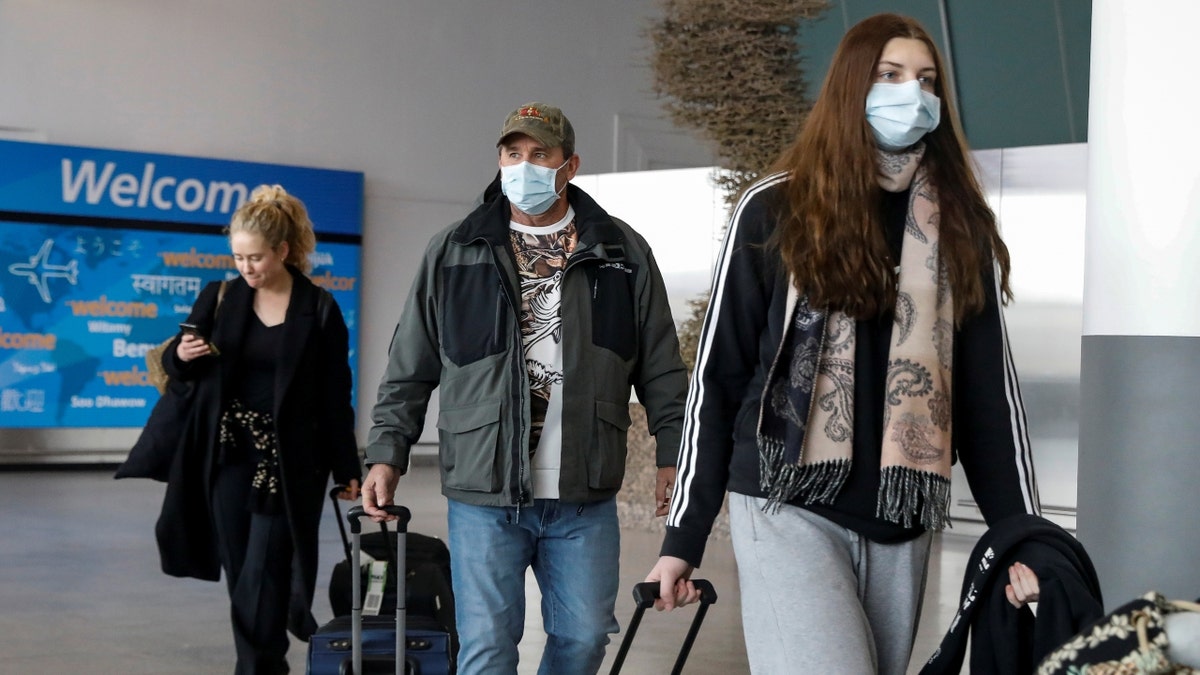The coronavirus pandemic resulted in a lot of loss — and to this day people may be losing out because of it.
A mental health phenomenon dubbed the “pandemic skip” has caught viral attention on social media.
The hosts of the podcast “Between Us Girlies” revealed their understanding of the concept in a TikTok video, which has been viewed over six million times.
COVID-19 LOCKDOWNS: WHAT’S UP WITH NOSTALGIA FOR THE ‘OUTBREAK ERA’?
“Whatever age you were when the pandemic started is … where you’re at mentally,” Casey Corradin, the Pennsylvania-based co-host, said in the video, which was posted in November 2023.
“So, these women that were, like, 27 when the pandemic started, and then it’s three years later and they’re 30, and everyone around them is having kids, they’re like … ‘I’m not ready to have kids. I’m still young, I’m 27.’”
She added, “We were in our early 20s when the pandemic started — and we took a big chunk of the early-20s, figuring-your-life-out phase, and now we’re 27 and we’re still figuring it out.”
Dominique Hamler, a registered nurse and executive director of the Los Angeles Outpatient Center, told Fox News Digital that the pandemic skip could pose a real concern for people of all ages.
COVID-19 PANDEMIC HAS CAUSED ‘COLLECTIVE TRAUMA’ AMONG US ADULTS, NEW POLL SAYS
“I am just excited that there is a word for it, because we definitely lost a moment of our lives during the pandemic,” she said.
“People were suffering with not only illness, but the fact that we were isolated and couldn’t even touch each other for a long period of time.”
Los Angeles Outpatient Center executive director Dominique Hamler said the pandemic skip could pose a real concern for people of all ages. (AONL Conference 2023)
Hamler worked on the front lines of the pandemic as a registered nurse. She said the pandemic skip refers to “that time period where our lives were disrupted.”
“Our lives were totally changed and will never be the same,” she said. “Not to mention our experience of what we lost from the aspect of time that we’ll never be able to gain again.”
FREE COVID TESTS COMING TO US SCHOOLS, SAYS FEDERAL GOVERNMENT: ‘PREVENTING THE SPREAD’
Hamler considers the concept a “mental regression,” as people feel stuck at the same developmental period and age they were when the pandemic started.
“We’re still processing it years later,” she said.
Psychologist Dr. Yamalis Diaz of NYU Langone reiterated that the pandemic skip represents a significant pause or slowing down of development.
A mental health phenomenon dubbed the “pandemic skip” has gone viral. (iStock)
“It’s almost like a movie you paused and resumed,” she said in a conversation with Fox News Digital.
“For people in a developmentally sensitive state … when a lot of developmental change is occurring, such as young adults, it makes sense that they would feel this most, compared to older adults whose lives were already relatively stable when the pandemic started.”
“People were suffering with not only illness, but the fact that we were isolated and couldn’t even touch each other for a long period of time.”
Young adults in particular may feel this impact when it comes to completing education, making career decisions, dating, establishing long-term relationships and becoming financially independent, Diaz said.
“[These] are all critical elements of this developmental stage and were highly impacted by having to ‘pause,’” she said.
Traditional plans and milestones were also put on hold during the pandemic, said Hamler.
Establishing long-term relationships is one of the critical developmental phases that was highly impacted by the pandemic, an expert said. (iStock)
“If you were a young adult, maybe thinking about getting married or having kids, that was put on hold,” she said.
This “skip” could result in continued delayed development if not addressed, Hamler warned.
“We are just at the tip of the iceberg [when it comes to] addressing mental health as a whole,” she said.
WHAT IS TAYLOR SWIFT AMNESIA? SWIFTIES REPORT THEY CAN’T REMEMBER HER CONCERTS FOR THIS REASON
“It’s going to delay everything until we start having a conversation about it, start getting the therapy and the treatment we need to address the trauma” that the pandemic caused, she said.
For some people, Hamler suggested a “deeper dive” may be necessary in order to “advance mentally, spiritually and emotionally.”
For some people, a “deeper dive” may be necessary in order to “advance mentally, spiritually and emotionally,” an expert told Fox News Digital. (iStock)
“It’s going to take some time and … a full, head-on focus on mental health,” she said.
Diaz agreed that the pandemic skip will cause a ripple effect that could delay other milestones, but noted that it’s “not necessarily a completely new phenomenon.”
THE TAYLOR SWIFT OBSESSION: PSYCHOLOGIST WEIGHS IN ON WHY FANS WORSHIP CELEBRITIES
“[This] is part of the basis for Dr. Jeffrey Arnett’s Emerging Adulthood theory,” she said.
Arnett, a psychologist, proposed that people between ages 18 and 25 are in a period called “emerging adulthood.”
“Our lives were totally changed and will never be the same.”
“In essence, when you look back over generations, the ‘path to adulthood’ has gotten longer, and young adults are reaching what are considered ‘traditional adulthood markers’ — finishing education, leaving home, becoming financially independent, starting a career, getting married and having kids — at older ages.”
Since the pandemic was “such a dramatic, ‘stop-everything’ kind of event,” Diaz suggested that it’s likely to impact transition times for the 20-something generations, he suggested.
Young party-goers dressed as holiday characters participate in the annual SantaCon pub crawl on Dec. 9, 2023, in New York City. (Stephanie Keith/Getty Images)
“This is especially true when you also consider mental health, which could also impact young adults’ ability to successfully transition through this stage,” she said.
“Given that this stage of development is already susceptible to increased anxiety, depression and executive functioning difficulties, the pandemic … added pressure to an already pressured developmental turning point.”
Hamler recommended “giving yourself time” instead of chasing milestones that may have been missed.
Pubs and restaurants reopen in London’s Soho following the U.K. government’s relaxing of COVID restrictions in England on April 12, 2021. (Jeremy Selwyn/Evening Standard via Getty Images)
With 2024 marking four years since the coronavirus outbreak, Hamler encouraged people not to suppress their emotions and to seek professional help when needed.
CLICK HERE TO SIGN UP FOR OUR HEALTH NEWSLETTER
“We need to talk about our problems,” she said. “It’s OK to feel angry, frustrated, depressed, anxious — all these feelings are normal.”
Travelers wear face masks as a preventive measure during the COVID-19 outbreak as they arrive at John F. Kennedy International Airport in New York City on March 20, 2020. (REUTERS/Brendan McDermid)
“Between Us Girlies” podcast co-host Corradin echoed this remark in a conversation with Fox News Digital.
“It’s so comforting to see so many people, across all different ages, who feel the same way,” she said.
CLICK HERE TO GET THE FOX NEWS APP
“[The fact that it’s] resonating with so many different people shows us that even if we feel alone — we’re not.”
For more Health articles, visit www.foxnews.com/health.
Angelica Stabile is a lifestyle writer for Fox News Digital.



























